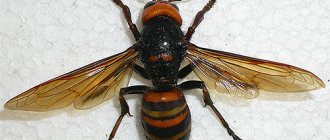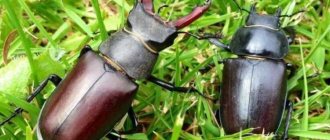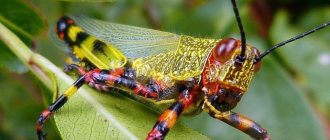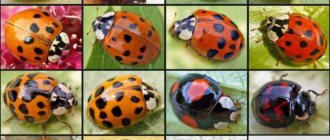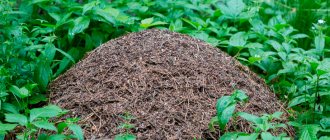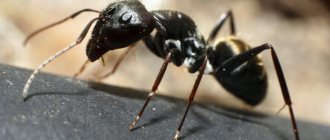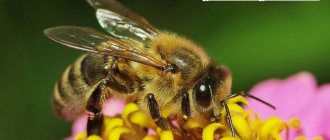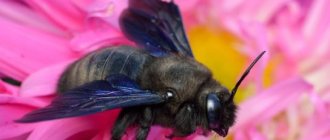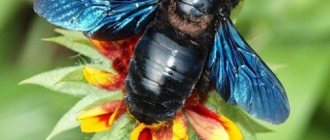There are things, without knowing which, the beekeeper will be doomed to losses, while for others their apiary will bring profit. These things include everything that concerns the honey bee. In beekeeping, it is important to understand the needs of your bees. To do this, you need to know the anatomy of the honey bee, its nutritional needs, vision characteristics, development of young individuals and how long they live. Let's find out about everything in order.
Characteristic
The peculiarity of different populations is that they build their nests on tree branches. The honeycomb contains small cells where honey and pollen are stored to feed future offspring. In warm climates, honey-bearing insects live outdoors and collect nectar throughout the year.
Gradually developing new territories, populations spread further and further, capturing the temperate climate zone. Adapting to the cool temperatures, they began to build nests in trees, which provide protection from the cold temperatures.
When choosing the right breed, the beekeeper needs to know which population is more productive, least susceptible to disease, and study the rules for keeping cultivated species. Caring for honey species requires the beekeeper not only knowledge, but also patience and special skills.
Varieties
Honey bees differ from each other due to numerous factors. As a rule, the most common features include appearance and color. Below we will look at the characteristics of the most popular honey bees for farming.
European dark
The breed is considered the most widespread in Russia and the CIS countries. The body is painted in a dark shade, and the proboscis is quite short.
Bees are large in size with an irritable and slightly aggressive temperament. A strong immune system, therefore insects are resistant to cloudy weather. During the season, one bee colony brings up to 30 kg of light product.
Caucasian
In terms of body dimensions, the bees are similar to the Ukrainian steppe breed. But at the same time, there are inclusions of gray on the yellow hairline. Insects have a long proboscis, as a result of which they are able to obtain nectar from the depths of flowers. They work throughout the day, regardless of climate change, and bring 35-40 kg of honey per year.
Carpathian
The body of carpathians is colored gray. Insects practically do not show aggression, so beekeepers easily collect honey from bee houses.
Advantages of the breed: swarming, as well as low susceptibility to cold temperatures and diseases. In addition, bees are highly productive - they collect up to 40 kg of product per season.
Ukrainian steppe
The bee body is small in size with yellow hair color. Bees do not show aggression towards humans. The main advantages of the breed are the ability to overwinter and good resistance to disease. A bee colony annually brings up to 40 kg of tasty and healthy honey.
Behavior
The life cycle of a bee and its behavior are dictated by instincts and laws of nature unknown to man.
In the spring, when the cold has already disappeared, the family in each hive begins to grow rapidly, feeding and developing offspring. Nectar collection begins from dandelions and flowering trees. During this period, the honey bee actively begins to prepare for swarming.
In the spring, colonies have significant food reserves of honey, but an experienced beekeeper tries not to interfere with the internal processes of the colony. When a new swarm breaks away and attaches nearby, the beekeeper can catch it, then place it in another hive. Both families will be actively collecting pollen, producing winter honey reserves.
Summer is harvest time. Honey collection begins in mid-June, continuing until the plants finish flowering. During a dry year, when the grasses dry out and the plants do not produce color, families can be overtaken by hunger. In dry summers, it is necessary to provide bees with sugar supplements or place your apiary closer to fields with flowering clover, alfalfa, buckwheat or sunflower.
In the fall, honey bees of any breed begin to make winter supplies in their hives, warm themselves, and prepare for the cold season. It is necessary to constantly monitor the preparation process, carefully reviewing the quality of the prepared supplies, removing honeydew honey, feeding the wards with syrup, adding the necessary vitamins and useful components to the water.
Nest
A colony of honey-bearing bees in a hive consists of 10,000-50,000 individuals, sometimes this figure grows to 100,000 worker bees thanks to the queen. Worker bees build nests in their houses, without which they would not have life. It is in the nests that pollen, nectar, honey are stored, brood grows, etc.
In the center of the nest (occupied by the brood), the optimal temperature is always maintained, which is necessary for the proper development of the eggs. The stronger the bee colony, and the larger the volume of the nest it occupies, the greater the temperature difference between the edges and the center.
Around the nest there are honeycombs built of wax; the wax is secreted from the wax glands of the bee, which over time hardens in the form of plates. Bees spend their entire lives between the plates (combs). A healthy family's nest is clean, dry and smells pleasant.
The honeycomb has 3 compartments in the form of cells for different processes:
- Bees , which serve to breed worker bees. Bee bread and honey are also stored there.
- Drone cells, in which drones grow, are where honey is stored.
- Queen cells are temporary cells that worker bees build to hatch a queen. Once the process is completed, the bees gnaw them off.
Structure and development
In families, there are three types of individuals that do their part in building and ensuring the normal functioning of the nest. These are queens, drones and workers.
One family can have only one queen. A new mother is raised if the old one has become weak and can no longer produce offspring. When a new female appears, the swarm simply separates, flying away to nest in another place.
A sign for a beekeeper of an imminent replacement of the female can be the location of the queen cell at 2/3 of the height of the honeycomb. A sign of close swarming of the family is the location of the queen cells on the lower frames. The average lifespan of a queen is 2-3 years. Considering how long a bee lives, the queen bee is very productive.
Nurses look after the larvae. They clean the hive and feed the larvae, which require food every minute. Special larvae are laid in separate cells and fed especially carefully. New females grow from them, giving continuation of the family.
There are workers in all populations; they do all the hard work. They build honeycombs, prepare food, collect pollen and water, and bring prey. Their important function is to protect the nest or restore order. First, young individuals are engaged in feeding the larvae or cleaning the cells. From the 10th day of life, workers produce honey, receiving it from collectors and distributing it among cells. From the 20th day, the young bee will already perform security functions. Only from the 22nd day of life are workers allowed to collect nectar. The active life period of any honey plant population is 6-7 weeks, after which the individual completely wears out and dies.
Among the pathologies that occur in domestic populations, beekeeping identifies arrhenotokia, chemical or honeydew intoxication.
Arrhenotoky or arrhenotoky parthenogenesis is virgin reproduction. The eggs only grow into males or drones if they are not fertilized in time. Scientists studying the characteristics of beekeeping cannot understand the reasons causing this anomaly, and therefore cannot give recommendations to prevent this phenomenon.
Having noticed arrhenotokia, the beekeeper should not worry. Smart insects will independently regulate the number of drones in their family. The workers will simply drive out the extra drones and they will die from lack of food.
To increase immunity to various infections and diseases, the beekeeper can use a solution of blue iodine: per 1 liter of water - tbsp. l.
Honey bee vision
Despite the fact that the bee has as many as five eyes (2 complex and 3 simple), its vision is by no means sharp or clear. The two large lateral ones, consisting of many facets (5000-6000), are compound eyes with which the insect sees a mosaic image of objects. Three small dots are simple eyes, whose role is not fully known, but it is precisely established that thanks to them the individual perceives the intensity of light. There are two opposing opinions regarding the fact that honey plants see moving or stationary objects better.
Another feature of honey plants is their good color vision (better than most honey plants). They see white, green, orange, yellow and blue colors well. At the same time, they hardly see red. They are also good at seeing polarized light, such as that emitted by a blue sky.
Therefore, many beekeepers paint their hives yellow and blue. Of course, this is not critical, since in addition to vision, there are other landmarks for a bee to return to its hive.
Reproduction
The uterus is responsible for reproduction. In one season, she lays several tens of thousands of eggs, filling the nest with young, able-bodied workers. Once a year, the queen bee leaves her hive to mate with a drone, then returns to the colony and continues to lay new larvae. The average lifespan of a female is influenced by the level and duration of her egg production.
Drones spend their entire lives trying to find a queen bee for fertilization. They look larger and thicker than ordinary workers, but do not have a sting. Drones serve to fertilize queens. After mating they always die.
In beekeeping, there are different seasons that are associated with the seasons. During each season, the families require different care and proper feeding. Experienced beekeepers know the basic principles of caring for each population, and also have several secret ways to help the family cope with problems.
- In the spring, the beekeeper begins to move the hives from the winter hut to the street. The families are transplanted into new clean hives. A new frame with flower honey is placed in the treated beehive. A frame with brood is installed nearby. The beekeeper then transfers the queen and workers. If there is less than 8 kg in the hive. honey, the beekeeper needs to replenish the supply with unopened honey frames.
- Summer starts in June. During the honey collection period, the beekeeper needs to closely monitor the normal swarming of colonies. Before the separation and departure of the swarm, there is noise, disturbance and activity inside the hives. After the queen flies out, the swarm settles around her. It is necessary to calmly collect the new swarm with light movements into a separate container. First you need to quickly catch the queen, then the swarm itself will fly after her and sit next to her. You can force insects into a new hive with a smoker. If there are several queens, the bees will still make a lot of noise and worry. Then you need to find and remove all the extra queens, leaving one.
- In the fall, the beekeeper needs to check the readiness of his bees for winter. The quality and quantity of winter supplies in the hives must be checked. During the dry season, hives can be filled with honeydew, which is poisonous. This product is distinguished by its dark color and flakes that appear when dissolved in water. The beekeeper must replace the honeydew product with flower or sugar fertilizer.
- For the winter, insects are left with the required amount of natural food or fed with sugar syrup. 5 liters are given per family. syrup, ratio: 1.5 kg of sugar per liter of water. Each hive can be divided in half to better maintain the desired temperature during wintering. There is a table for caring for bees at different times. It can be used as a benefit to provide wards with proper care and save the population from extinction or disease. It is necessary to know which species are most suitable for a particular climate and the characteristics of their breeding.
Swarming
Bee colonies swarm around April or May, when the weather warms up. Thus, they breed in natural conditions. Families in a small room swarm much more often than in large and spacious ones.
As long as the brood is growing well and the worker bees are busy feeding the larvae, there will be no swarming. It comes at a time when there are a lot of bees.
If the insects have enough nutrients in their bodies and their physiology does not change, swarming will not occur.
Some methods to prevent swarming:
- moving insects to a cool place where they will expend a lot of energy;
- load the bees with feeding the brood;
- pour a large amount of sugar syrup for processing;
- transfer bees to intensive summer work.
By adopting methods, you can delay swarming “for later” or prevent it altogether. Excess nutrients in the body is also not good; swarming will definitely begin.
As soon as the bees clog the first queen cells, some of the bees fly out of the hive with the old queen. If the weather is bad, the flight may be delayed for several days.
Long before departure, worker bees fly out in search of a new place of residence; they look for boxes, lightweight logs that beekeepers specially hang for the departed herd.
After swarming, bees work much better than ordinary colonies. This is due to the fact that the swarm contains mainly young bees, who either did nothing in the old nest or simply helped feed the larvae.
The young animals begin to work well in the construction of combs, in collecting honey, in feeding the larvae and preserving honey.
Wintering
In late autumn, at the end of the honey harvest period, all families actively begin to prepare for wintering. At this time, many plants, herbs and flowers bloom. These are asters, chicory, bittersweet, goldenrod, sunflower. There are enough forbs for worker insects to replenish their winter honey reserves. But if there are few flowering plants, then you need to give your wards sugar feeding. From mid-October, the honey swarm begins to carefully prepare for the cold winter.
In winter, the insect population tries to survive the cold with minimal losses. Enough honey reserves have been accumulated to feed the entire family, as well as to build new honeycombs for raising new offspring of insects. In winter there is no flight from the nest; individuals are in a half-asleep state. But inside, the activity of workers continues to breed and feed new brood with honey, which will replenish the ranks of prey-bearing insects in the spring.
With the end of the cold weather and the onset of warm weather, an active increase in the number of individuals begins. From the end of February or the beginning of March, beekeepers are recommended to feed insects in the form of cakes so that the insects begin to eat well and reproduce quickly. The lifespan of an individual individual is up to 6 weeks.
Appearance of bees
Their unusual color embodied the well-known one - yellow spots on a dark background - an excellent combination and very noticeable! This bee color signals to others that it is poisonous.
- If you offend a bee, it “fights back” with its sting measuring 3-45 mm, which is located on its abdomen.
- There are large eyes on the head, which enable the bee to see objects located at long distances.
- The remaining several eyes perceive nearby objects. That’s why bees’ vision is called mosaic.
- The bee's sense organs are represented by a pair of antennae.
On the bee's back there are two pairs of membranous wings, which are equipped with powerful muscles to enable flight. Three pairs of bee legs are attached to the back, and all the internal organs are located in the abdomen.
The abdomen tends to increase in volume - there are rings inside it that ensure this mobility. At the end of the abdomen there is a sting containing poison (apitoxin) - the bee’s protection from the outside world. The male (drone) does not have a stinger.
True, having stung someone, a bee says goodbye to its life.
Bees are the kings of the air element - in one second they make about 450 wing flaps, while having only 4 wings. An insect needs just a minute to cover a kilometer, and to find nectar, a bee can cover distances of up to 10 kilometers.
Possible diseases
In bees, a distinction is made between contagious and non-contagious diseases.
A bee can get sick from contagious diseases through contact with other sick bees; the most common ones include:
- acarapitosis;
- meleosis;
- nosematosis
There may be parasites on the bee's body that cause other diseases, such as varroa. Some contagious diseases can kill an entire swarm, so the beekeeper must closely monitor their health.
Non-contagious diseases can appear due to improper feeding of bees.
Proper nutrition is very important for honey bees, because if a bee receives all the necessary vitamins, microelements and other useful substances, then its productivity is at a high level.
Non-communicable diseases also include those that occur during the development of embryos. The reason for this may be a cold or the presence of parasites; underdeveloped individuals will emerge from such larvae or the eggs will dry out.
Basic content rules
Beekeeping requires at least minimal knowledge of the way of life of bee families, their needs, starting from the location of the “house” and its arrangement.
Place
The apiary is located in dry areas protected from the wind; it is advisable to fence it by planting shrubs. Honey plants are planted on the site.
Important! You cannot set up an apiary close to roads and industrial facilities: in the first case, the distance is at least five hundred meters, in the second - up to five kilometers
Rules for arranging a home for bees
The hive houses are placed at a distance of three meters from each other, ten meters between the rows. To help bees recognize their homes, they are painted in white, yellow or blue shades.
To protect against insect pests, the windows of the “houses” are covered with fine mesh. The apiary must be equipped with drinking bowls; insects also feel thirsty.
Bee families
According to their genus, bees are divided into wild and domestic. Both families tend to live in families. A honey bee, wild or domestic, develops from an egg and, as is known, is considered a separate labor unit.
Evolution has shown that their presence together is a necessity, and therefore a person working with bees deals not with individual individuals, but with a whole family as a full-fledged economic unit. A honey bee cannot live for a long time away from its family, since it is completely dependent on it.
